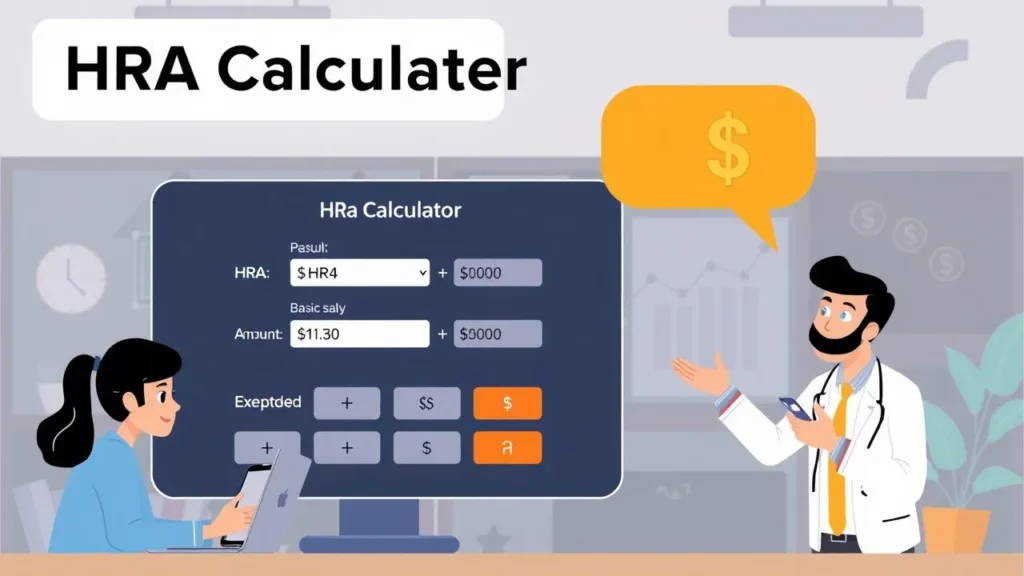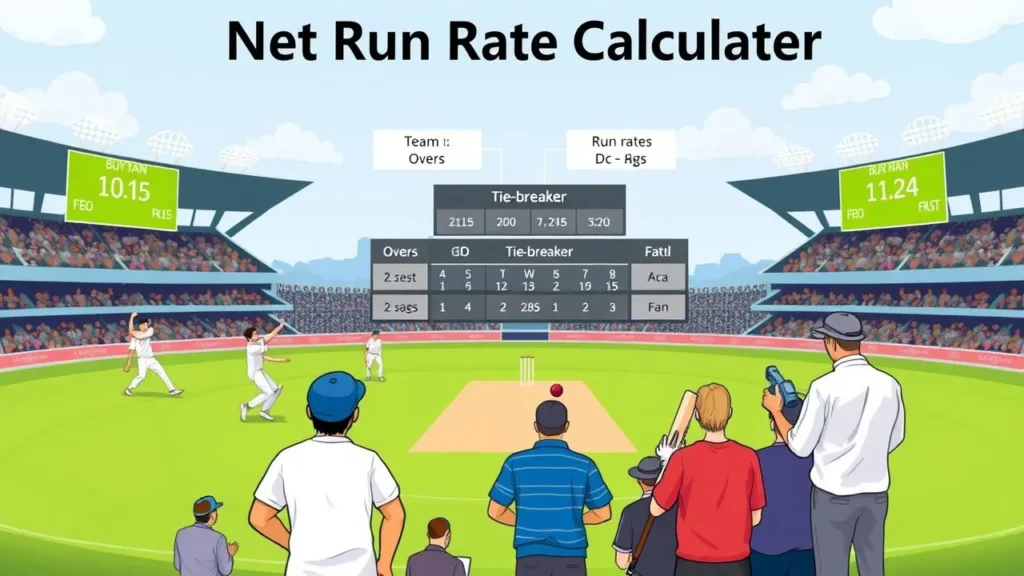Money Market Account Calculator
Estimate your savings growth over time
Projected Savings Growth
Detailed Summary
Yearly Breakdown
| Year | Start Balance | Contributions | Interest | End Balance |
|---|
This calculator provides estimates only. Actual results may vary based on specific account terms and conditions.
Money market accounts (MMAs) are a safe and profitable option to grow your savings, offering competitive interest rates. But it can be a little tricky to understand how your money will grow over time. This is where a Money Market Account Calculator comes in handy.
In this guide, we’ll show you how these calculators work, why they’re important to you, and tips for using them effectively to maximize your savings. Let’s understand in simple words.
Understanding Money Market Interest Calculators
The Money Market Interest Calculator is a useful tool that helps you estimate how much your savings will grow if you deposit money into a Money Market Account (MMA). Compared to regular savings accounts, MMAs generally offer higher interest rates, making them a good option for short-to-medium-term savings goals.
What affects your earnings?
To calculate accurate returns, the calculator takes a few key inputs, such as:
Initial Deposit (Starting Amount)
This is the amount you initially put into your MMA. Higher starting balance means you will earn more money but interest, which will increase your savings even more.
Monthly Contributions (Every Month Savings)
Many people regularly add money to their account. If you also add some amount every month, the calculator can show how much this extra savings can increase your total amount.
Annual Percentage Yield (APY – Saal Bhar Ka Faida)
APY is the real rate that tells you how much your money is going to grow, by including compound interest. Since MMAs generally give higher APY than standard savings accounts, your money grows faster.
Compounding Frequency (How often will you get interest)
This decides how many times the interest will be calculated and added to your account. Common compounding intervals are:
- Daily (daily)
- Monthly (once a month)
- Quarterly (once in 3 months)
- Annually (once a year)
The more times you compound, the more your money will increase because the power of compounding increases your returns.
Investment Period (for how long will you keep the money)
This is the time for which you will keep your money in MMA, whether it is for a few months, a year, or several years. The longer you keep your money invested, the more interest you will earn.
So if you want to grow your savings smartly, then Money Market Account and its interest calculator can be useful for you.
How to Use a Money Market Savings Calculator
If you want to see your money grow in a Money Market Account, then this calculator can be very useful for you. In this, you just have to enter some information, such as:
1. Initial Deposit
This is the amount that you initially deposit in your account. The higher this amount, the more interest you will get.
2. Monthly Contributions
If you keep adding small amounts regularly, your savings will grow rapidly. Even small deposits can make a big difference in the long run.
3. Annual Percentage Yield (APY)
APY is the rate at which interest is earned on your money. The higher this rate, the faster your savings will grow. For example, if the APY is 3%, it will give a return of more than 2.5%.
4. How will the interest be compounded? (Compounding Frequency)
This decides how often the interest will be compounded. There are some options:
- Monthly – Interest will be credited every month
- Quarterly – Interest will be credited every quarter
- Annually – Interest will be credited once a year
The more frequently the interest is credited, the more will be the benefit.
5. Investment Period
This is the period (in years) for which you will keep the money in this account. The longer the period, the more will be the effect of the interest.
6. Calculate Your Earnings
After filling all the details, the calculator will show you:
- Final Balance – How much money will be in your account at the end of the period.
- Total Interest Earned – How much interest you earned.
Example:
- Initial deposit: $10,000
- Monthly deposit: $200
- APY: 3% (interest compounded monthly)
- Time: 5 years
Result:
- Final balance: $23,456
- Total interest: $3,456
This means, after 5 years, your initial deposit and monthly deposits plus interest will give you $23,456, of which $3,456 will come from interest alone!
This way, a Money Market Calculator helps you plan ahead so that you can grow your savings the right way.
Unlocking the Power of Compound Interest
Compound interest means earning interest on interest, which makes money grow faster.
- Why does it matter in MMA (Money Market Accounts)?
- Interest compounded repeatedly (daily/monthly) = higher returns
- The longer the time period, the faster the growth
- Regular investment = money grows faster
Example:
- Without compounding (simple interest): ₹11,500 on ₹10,000
- Compounding on a monthly basis: ₹11,617 (₹117 more!)
A little difference now, but a huge benefit in the long run!
What Is a Compound Interest Calculator?
If you want your money to grow over time, then the compound interest calculator is a great tool for you. It is different from simple interest because in this you get profit not only on the principal amount but also on the interest that is credited every time. That is, your money grows exponentially!
This calculator is very useful for investors, savers and those doing long-term financial planning. Let’s understand its special features:
Key Features of a Compound Interest Calculator
1. Initial & Recurring Deposits
- Principal: The money you invest initially.
- Recurring Deposits: Additional money added every month, quarter or year.
This will show you how small savings + compound interest can add up to a huge amount of wealth.
2. APY & Compounding Adjustments
- APY (Annual Percentage Yield): The real rate of return that takes into account the effect of compounding.
- Compounding frequency: How often will the interest be compounded—daily, monthly, quarterly or annually?
The more often the interest is compounded, the more profit! A good calculator will give you these options.
3. Tax & Inflation Adjustments
- Tax: Enter your tax slab to see how much profit you will get after tax deduction.
- Inflation: Factor in inflation to see how much your savings will be worth in the future.
Looking at returns without tax and inflation may be far from reality.
4. Year-by-Year Breakdown
- How much interest was earned each year?
- What will be the total balance at the end of each year?
- How much did compounding benefit you in the long run?
This allows you to set long-term goals and adjust your strategy.
5. User-friendly and mobile-friendly
- Easy to use: Easily enter inputs using sliders and dropdown menus.
- Use anywhere: Works on both desktop and mobile.
- Instant results: Easy-to-understand results in charts and tables.
Whether you are a novice or an expert, this calculator is perfect for everyone.
Why Use a Compound Interest Calculator?
- Financial Planning: Estimate your savings for retirement, children’s education or big expenses.
- Compare Investments: Check different investment options based on APY and compounding frequency.
- Motivation: Get inspired by the magic of small savings and long-term investments!
By taking advantage of a compound interest calculator, you can gain clarity on how small, disciplined investments made today can translate into substantial wealth over time.
Importance of a Money Market Account Calculator
1. Accurate projections
The biggest problem with financial planning is uncertainty. Most tools just give you an estimation, leaving you wondering if your savings will actually meet your goals. But with an accurate calculation tool, you can see the exact growth based on your inputs, not just guesswork. Whether you’re saving for retirement, buying a home or education, knowing the future value of your investments helps you make better decisions. By looking at compound interest, you can understand how your money will grow over time. Every rupee will be accounted for.
2. Financial planning
Saving money without a clear target seems pointless. A good projection tool helps you set realistic and achievable goals. It shows you how much you need to save every month or year to reach the amount you want. Suppose you want to save ₹100,000 in 10 years, then this tool will tell you how much you need to contribute every month, depending on the interest rate. This eliminates the tension of saving less and keeps you on the right track without any unrealistic expectations.
3. Compare different situations
Saving strategies are not the same for everyone. A good financial tool helps you compare multiple situations. What if you save ₹100 more every month? If the APY (annual interest rate) is higher, how will it affect the returns? What if you increase the investment time period by 5 years? By adjusting these variables, you can optimize your savings strategy and choose the best path to reach your financial goals.
4. Impact of taxes and inflation
Most projections ignore important factors like taxes and inflation, leading to inaccurate expectations about returns. A good tool calculates these factors as well, so you get a more accurate picture of your net returns. Such as:
- Taxes: Depending on your investment type (e.g., taxable account, retirement fund), your earnings may be subject to capital gains or income taxes, reducing your profits.
- Inflation: Things get more expensive over time, which reduces the value of your money. Including inflation can help you see what the real value of your savings will be in the future – so you can know if your goals are still possible.
Incorporating these factors gives you a more accurate and practical picture of your financial growth – so there’s no guesswork in the future!
The Role of a Money Market Account Calculator
Saving money is important, but simply putting money in a savings account won’t give you good returns. If you want your money to work for you, you need to create a smart plan that balances safety, liquidity, and growth. Here are some simple tips:
1. To get better returns
Not all savings accounts are the same. While normal savings accounts offer low interest rates, High-Yield Savings Accounts, Money Market Accounts (MMAs), and CDs (Certificates of Deposit) offer higher interest rates. With a little research and the benefit of compounding interest, you can grow your money faster. Even a small difference in APY (Annual Percentage Yield) can pay off in the long run.
2. Build a savings base before investing
Before investing in shares, mutual funds, or property, strengthen your savings. A good savings plan will help you decide:
- How much to invest (without touching your emergency fund).
- Low-risk options (like MMAs, Treasury bills) if you need money quickly.
- Balance risk and return—keep some money in safe, high-interest accounts too.
Smart people don’t blindly make high-risk investments; they first build a safety net.
3. Develop good savings habits
The biggest problem with saving is not being able to save consistently. For this:
- Set up automatic transfers (pay yourself first as soon as you get your salary).
- Don’t withdraw money unnecessarily (MMAs have limited transactions, which prevents undisciplined spending).
- Set goals (emergency fund, down payment on a house, vacation savings).
When you see your money grow, you’ll be motivated to save more.
4. Choose the best MMA account
Money Market Accounts (MMAs) are the best combo of a savings and checking account—they offer high interest and some withdrawal flexibility. But not every MMA is good. Pay attention to:
- What is the APY? (Some banks offer 4-5% or more, some offer next to nothing).
- What are the fees? (Monthly charges can eat into your bottom line).
- How accessible is it? (Some MMAs accept checks or debit cards).
- Is it FDIC/NCUA insured? (So your money is protected up to $250,000).
If a bank is offering better interest, don’t hesitate to switch accounts—it’ll make your money grow faster!
Why Do Money Market Account Calculators Matter?
- Growth ko kam mat samajho – Thoda extra paisa rakhne se future mein kaam aata hai.
- Emergencies, holidays ya koi bada kharcha ke liye bachat karo – Kabhi pata nahi kab zarurat pad jaaye.
- Paisa smartly invest karo – Jyada interest kamane ka mauka mat chodo.
- Inflation se bacho –Agar paisa grow nahi karega, toh value kam hoti rahegi.
Key Benefits of Using a Money Market Calculator
Saving money is the foundation of financial stability, but just keeping money in a normal savings account will not make you rich. To reap the real benefits, you need to visualize your money growing, compare offers from different Money Market Accounts (MMA), smartly adjust contributions, understand the power of compounding, and also keep track of taxes and inflation. So let’s understand it step by step.
1. Visualizing Savings Growth: See Your Money Work for You
One of the most powerful motivators in personal finance is seeing your savings grow over time. Unlike traditional savings accounts, Money Market Accounts (MMAs) often offer higher interest rates, accelerating growth.
How to Visualize Savings Growth:
- Use Online Savings Calculators: Tools like NerdWallet or Bankrate allow you to input your initial deposit, monthly contributions, and interest rate to project future balances.
- Track Progress with Spreadsheets: Create a simple Excel sheet to log contributions and interest earned monthly.
- Set Milestones: Break your savings goal into smaller targets (e.g., 5K in 1year, 15K in 3 years) to stay motivated.
Pro Tip: The sooner you start, the more you benefit from compound interest—where your interest earns interest over time.
2. Comparing Different MMA Offers: Find the Best Rates & Terms
Not all MMAs are created equal. Some offer higher APYs (Annual Percentage Yields), while others have lower fees or better accessibility.
Key Factors to Compare:
- Interest Rates: Look for the highest APY (some online banks offer 4-5%, while traditional banks may offer less).
- Minimum Balance Requirements: Some MMAs require $1,000+ to avoid fees, while others have no minimums.
- Fees: Watch for monthly maintenance fees, withdrawal limits, penalties.
- Accessibility: Can you withdraw easily via ATMs, checks, or transfers?
- FDIC Insurance: Ensure your MMA is FDIC− insured (upto 250,000 per depositor) for safety.
- Best Strategy: Compare at least 3-5 MMA providers (e.g., Ally Bank, Discover, Capital One) before opening an account.
3. Adjusting Contributions for Faster Results
If you want to reach your savings goal sooner, increasing contributions—even by small amounts—can make a big difference.
Ways to Boost Savings Faster:
- Automate Deposits: Set up automatic transfers from checking to MMA after each paycheck.
- Cut Unnecessary Expenses: Redirect money from dining out, subscriptions, or impulse buys into savings.
- Use Windfalls Wisely: Deposit tax refunds, bonuses, or cash gifts directly into your MMA.
- Gradual Increases: Start with what you can afford, then increase contributions by 1-2% every few months.
Example:
Saving 300/month at 18,700 in 5 years
Increasing to 500/month = 31200 in 5 years
4. Understanding Compounding Effects: The Power of Reinvested Interest
Compound interest is the secret weapon of long-term savers. Unlike simple interest (earned only on the principal), compounding means your interest earns more interest over time.
How Compounding Works:
- Monthly vs. Annual Compounding: More frequent compounding (daily/monthly) grows savings faster.
- Time Matters: The longer you leave money untouched, the greater the compounding effect.
Example:
- $10,000 at 4% APY, compounded monthly:
- 5 years: $12,190
- 10 years: $14,859
- 20 years: $22,080
Key Takeaway: Start early, contribute consistently, and avoid withdrawal to maximize compounding benefits.
5. Planning for Taxes & Inflation: Protecting Your Savings’ Real Value
Even with high-yield MMAs, taxes and inflation can erode your returns. Smart planning ensures your savings retain purchasing power.
Tax Considerations:
- Interest is Taxable: MMA earnings are taxed as ordinary income (federal & state).
- Strategies to Reduce Taxes:
- Use tax-advantaged accounts (e.g., Roth IRA, HSA) for long-term savings.
- Consider municipal MMAs (tax-free interest in some cases).
Inflation Impact:
- If inflation is 3% and your MMA earns 4%, your real return is only 1%.
- Solution: Diversify with higher-yield investments (CDs, bonds, index funds) if you have a longer time horizon.
Who Should Use a Money Market Calculator?
- Savvy savers looking for better returns
- Retirees seeking low-risk interest income
- Young professionals building emergency funds
- Investors comparing MMA vs. CDs or bonds
- Families saving for education or vacations
Along with Mortgage Calculator, check other SIP Calculator, Retirement Calculator from here.
Frequently Asked Questions
Most MMAs compound daily or monthly, but check with your bank.
Yes, but they assume no withdrawals and a fixed APY.
No, MMAs are FDIC-insured (up to $250,000).
APY includes compounding, giving the true annual return.
MMAs often have higher rates but may require higher minimum balances.
Some charge fees if balance requirements aren’t met.










